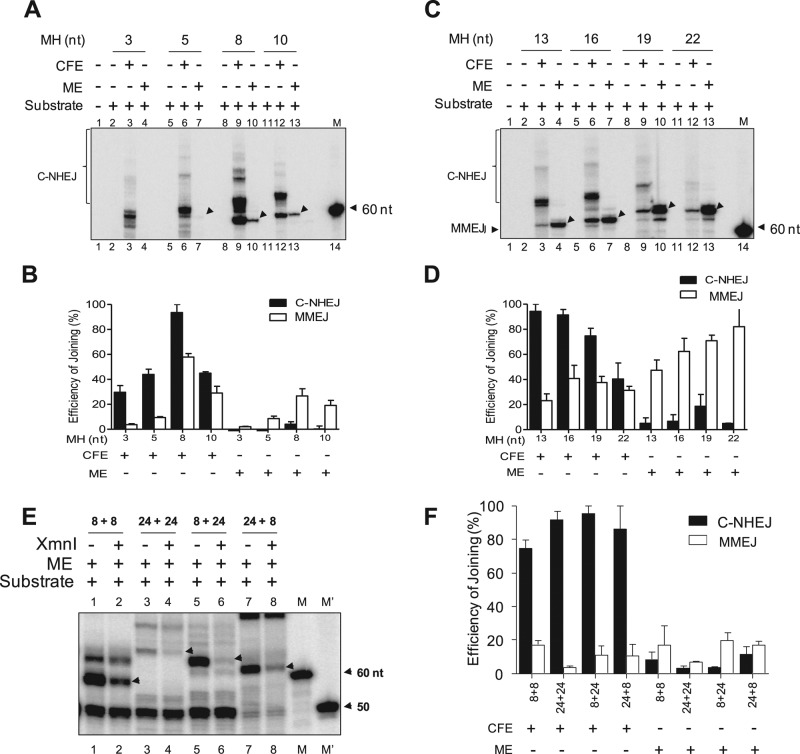FIGURE 3:
Evaluation of length and position of microhomology on efficiency of MMEJ in mitochondria. (A) Gel profile showing efficiency of MMEJ in mitochondrial extracts when length of microhomology is 3, 5, 8, or 10 nt. (B) Bar diagram showing quantification of MMEJ and C-NHEJ products shown in A. Graph is a cumulative representation of three independent repeats. For quantification, highest PSLU value of C-NHEJ or MMEJ was taken as 100%, and the relative efficiency between different extracts or substrates was calculated. (C) Denaturing PAGE profile showing efficiency of MMEJ in mitochondrial extracts when the length of the microhomology is 13, 16, 19, or 22 nt. (D) Bar graphs representing quantification of the C-NHEJ and MMEJ products shown in C. In all cases, cell-free extracts from testes served as the control. For quantification, the highest PSLU value of C-NHEJ or MMEJ was taken as 100%, and the relative efficiency between different extracts or substrates was calculated. (E) Comparison of MMEJ efficiency of mitochondrial extracts when an 8-nt microhomology region was positioned at different lengths from a DSB. Here, 8+8 indicates that the distance between the microhomology and DSB is 8 nt in both substrates; 24+24, that the distance between microhomology and DSB is 24 nt in each substrate; and while 8+24 and 24+8 that the distance is either 8 or 24 nt as indicated. DNA substrates were designed in such a way that microhomology- mediated joining creates a restriction site for XmnI. The band at 50 nt is contributed by random primer extension of unused DNA substrates where radiolabeled primer can bind. (F) Bar diagram showing quantification of the end-joined products of the gels shown in E. In all cases, MMEJ products are indicated by arrows, and C-NHEJ products are bracketed. For quantification, the highest PSLU value of C-NHEJ or MMEJ was taken as 100%, and the relative efficiency between different extracts or substrates was calculated. M′, γ-32P–labeled 50-nt ladder; M, labeled 60-nt oligomer.

